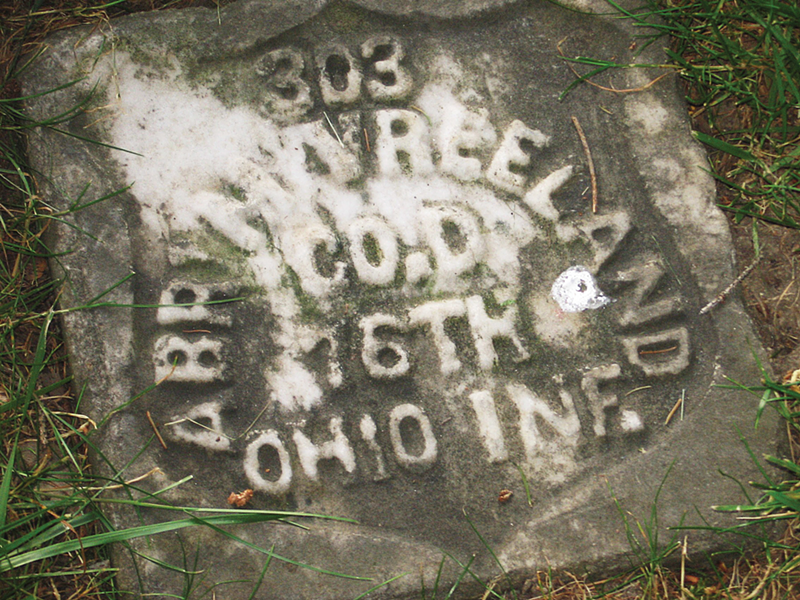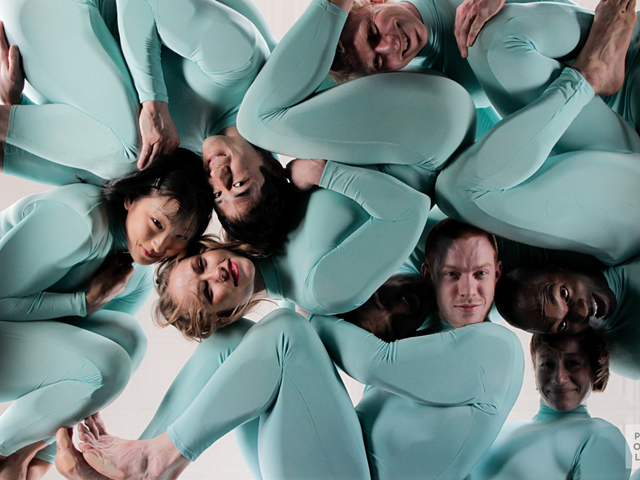On June 20 at 7 p.m., Spring Grove Cemetery will offer a Twilight Tour of what I believe is one of the finest and most prescient war memorials in this region — its Civil War section, where 1,027 soldiers are buried in a manner so subtly unobtrusive to the surroundings that it’s easy to overlook. (You can register at springgrove.org — the tour is free but it can fill up in advance.)
It’s a memorial that seems right for our times because it also works as environmental sculpture — even though it’s approximately 150 years old, and it’s not officially a memorial or even a national cemetery.
The Civil War section at Spring Grove prompts an introspective, meditative response from the visitor, and probably always will. You feel the loss.
There are three slight grassy mounds rising from the ground, and five concentric circles (around each mound) of small, flat stone markers.
From even 10 feet away, these markers are hard to see. Each has a name and pertinent information; many have become hard to read, as time, landscape and weather take their toll. You have to make an effort to read each, which makes each one more poignant. At one of the mounds, a tree grows right through several rows — a touching contrast of life and death.
Atop each mound is a cannon barrel, facing upright to the sky. It is an obtrusive weapon, true, but it feels as if it’s raised in a lonely final salute. There are a cannon and flagpole in an adjacent patch, with a marker erected in 1907 to honor the 28 unknown soldiers buried at the base of the flag.
The fact that there are these graves here — in a city that didn’t have a major Civil War battle — adds to the site’s power, as it reminds you of the war’s wide reach. Most of these soldiers died in area hospitals from disease or wounds, according to the cemetery’s self-guided walking tour pamphlet. (All but 17 are Union.)
The pamphlet also explains that the land containing these graves belongs to the state and federal governments. But Spring Grove’s landscape architect/supervisor at the time, Adolph Strauch, would not allow government-style upright markers, fearing their obtrusiveness.
It is a mournful place but also soothing. It shows respect to its surroundings and thus sees nature as an antidote to what war has wrought.
It also reminds me of one of our greatest war memorials, Maya Lin’s Vietnam Veterans Memorial, and maybe a bit like her “Wave Field” earthwork in Ann Arbor, Mich., too. Her 1982 Vietnam memorial works as a solemnly beautiful piece of environmental sculpture. The walls — reflective stone inscribed with the names of American soldiers lost — are set into the ground itself, with green earth surrounding. One can compare it to a trench or a cemetery.
That memorial has been extremely influential on other memorials elsewhere, since it sets the proper tone for remembering all of the U.S.’s post-World War II/Cold War Era wars/military excursions in which there were no decisive victories and even, in the case of Vietnam, an outright loss.
But I wish that environmental awareness, that sense of mournfulness, could trickle down more to our newer regional memorials, so communities that try to honor and respect those who have died in recent wars don’t succumb to unintentionally admiring combat for its own sake.
Unfortunately, too many are stuck just mimicking the old-fashioned traditional-sculpture poses of the past, usually featuring an armed soldier. I look at them and see a connection to the gun-glorification culture of today, and the tragedies — like Sandy Hook — made possible by it.
My (un)favorite example of this is Blue Ash’s Bicentennial Veterans Park, which was dedicated in 1991 and has an outer circle of 10 life-size sculptures of soldiers from past wars. These include the Mexican-American War, the Spanish-American War as well as the Civil War and World War II.
Standing in the middle of these warriors, most of them armed, feels dangerous — and overbearingly bellicose. One does appreciate the quality of the work and the multiculturalism of the more recent pieces — the Vietnam soldier is African-American; one of the two Gulf War soldiers could be female — but the whole thing seems wrong for our times.
One wishes this and other newer regional war memorials would learn from Spring Grove’s Civil War section’s spirit. It never will get old.
CONTACT STEVEN ROSEN: [email protected]






